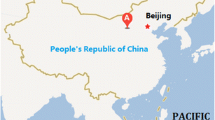Abstract
Subsidences which occur within, or near, the outcrop of the Chalk are due to the collapse either of solution features or of old mine workings. However, only the latter are considered here. Mine workings in the Chalk extend back into the distant past, the most ancient workings being those which Stone Age man excavated in his quest for flint. The collapse of old mine workings is unpredictable and, to make the situation worse, most old workings are unrecorded and are therefore a potential hazard in areas scheduled for development. The investigation of such potentially hazardous ground conditions, especially the detection of sub-surface cavities, is by no means a simple task although geophysical methods of exploration are being continually improved. Remote sensing and aerial photography have also proved useful in recognizing the surface expression of mine workings. In addition, hazard mapping techniques have been developed which attempt to identify problem ground conditions. Two case histories of mine collapse at Bury St Edmunds, Suffolk and Grays, Essex are described.
Résumé
Les affaissements qui se produisent dans ou à proximité des affleurements de craie sont dus à des effondrements qui sont liés soit à des phénomènes de dissolution soit à d'anciens travaux miniers. Seuls ces derniers sont étudiés dans le présent article. Les travaux miniers dans la craie remontent à un passé lointain, les plus anciens travaux étant ceux de l'homme de l'Age de Pierre lorsqu'il recherchait le silex. des risques potentiels dans les zones prévues pour des aménagements. La recherche de ces conditions potentiellement dangereuses et en particulier la détection des cavités de sub-surface n'est pas facile, bien que les méthodes géophysiques soient sans cesse améliorées. La télédétection et la photographie aérienne se sont également avérées utiles pour la reconnaissance des manifestations de surface des exploitations souterraines. De plus, des techniques de cartographie des risques ont été développées, qui tentent d'identifier les situations à problèmes. Deux cas d'effondrements miniers situés à Bury St Edmands, dans le Suffolk et à Grays, dans l'Essex, sont décrits.
Similar content being viewed by others
References
ARROWSMITH D.J. and RANKILOR P.R., 1981: Dalton by-pass: site investigation in an area of abandoned haematite mine workings. Quarterly Journal of Engineering Geology, 14, 207–218.
CAIGER J.E.L., 1954: The denehole controversy. Proceedings of the Croydon Natural History and Science Society, 12, 132–143.
CHAPMAN D.I. and HAMMOND P.M., 1962: A preliminary report on investigations in the deneholes at Hangman's Wood, Grays, Essex. Essex Naturalist, 31, 1–14.
EDMONDS C.N., GREEN C.P. and HIGGINBOTTOM I.E., 1987: Subsidence hazard prediction for limestone terrains, as applied to the English Creataceous Chalk. In: “Planning and Engineering Geology”, Engineering Geology Special Publication No. 4 edited by Culshaw M.G., Bell F.G., Cripps J.C. and O'Hara M. The Geological Society, London, 283–294.
HOLMES T.V. and COLE W., 1887: Report on the denehole exploration at Hangman's Wood, Grays, 1884 and 1887. Essex Naturalist, 2, 225–276.
KENNIE T.J.M. and EDMONDS C.N., 1986: The location of potential ground subsidence and collapse features in soluble rocks by remote sensing techniques. In: Proceedings of an International Symposium on “Geotechnical Applications of Remote Sensing and Remote Data Transmission”. American Society for Testing Materials, Special Technical Publication, 1–24.
LE GEAR R.F., 1979: Deneholes, Part 2. Records of the Chelsea Speleological Society, 10, 1–116.
McCANN D.M., JACKSON P.D. and CULSHAW M.G., 1987: The ase of geophysical surveying methods in the detection of natural cavities and mineshafts. Quarterly Journal of Engineering Geology, 20, 59–73.
NORMAN J.W. and WATSON I., 1975. Detection of subsidence conditions by photogeology. Engineering Geology, 9, 359–381.
PEARMAN H., 1976: Jacqueline Close Chalk Mine, Suffolk: Caves and tunnels in south east England, Part I. Records of the Chelsea Speleological Society, 7, 24–30.
YOUNG N.M., 1970: Caving in south east England. Journal of the British Speleological Association, 6, 45, 13–20.
Author information
Authors and Affiliations
Rights and permissions
About this article
Cite this article
Bell, F.G., Culshaw, M.G., Moorlock, B.S.P. et al. Subsidence and ground movements in chalk. Bulletin of the International Association of Engineering Geology 45, 75–82 (1992). https://doi.org/10.1007/BF02594906
Published:
Issue Date:
DOI: https://doi.org/10.1007/BF02594906




